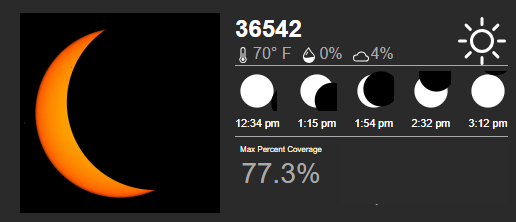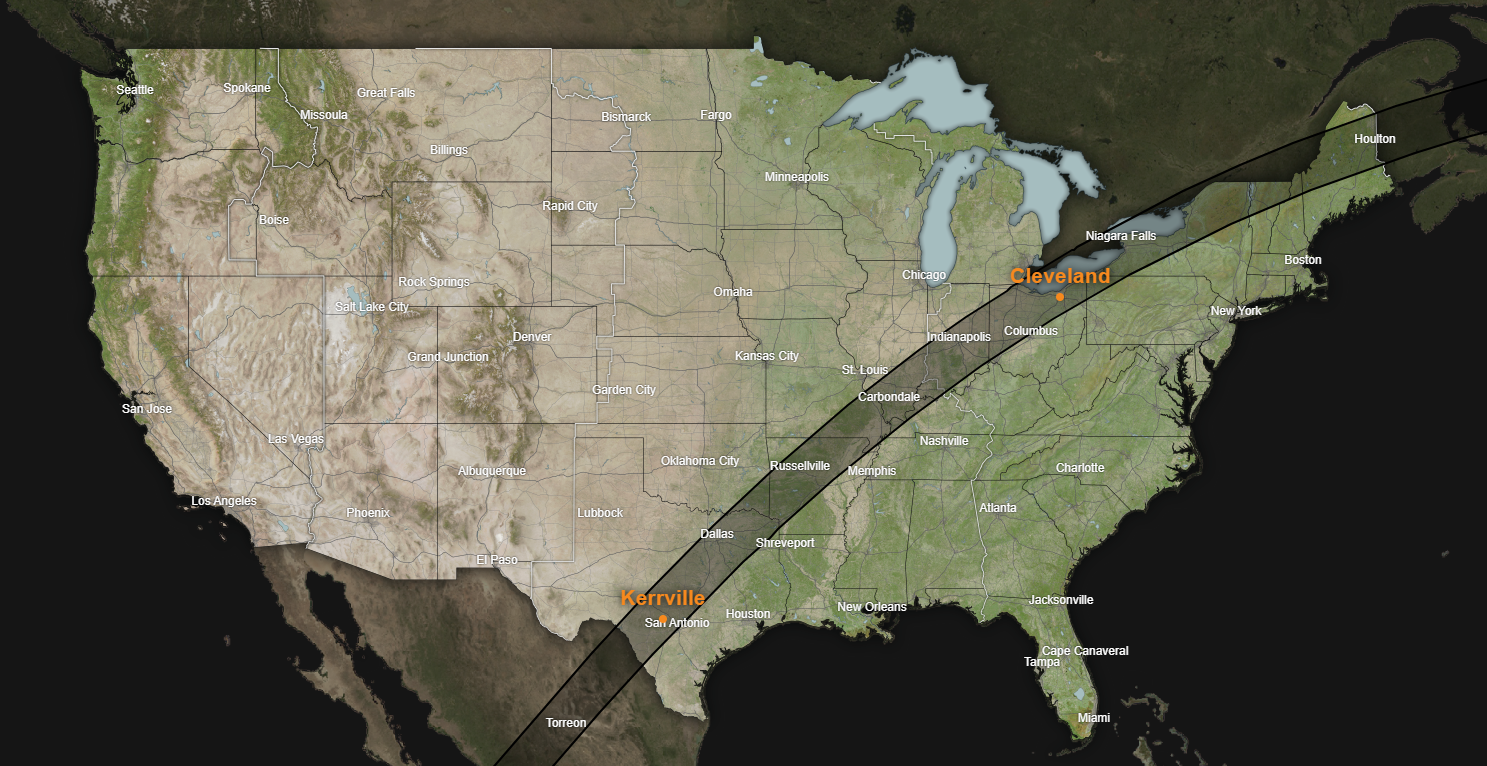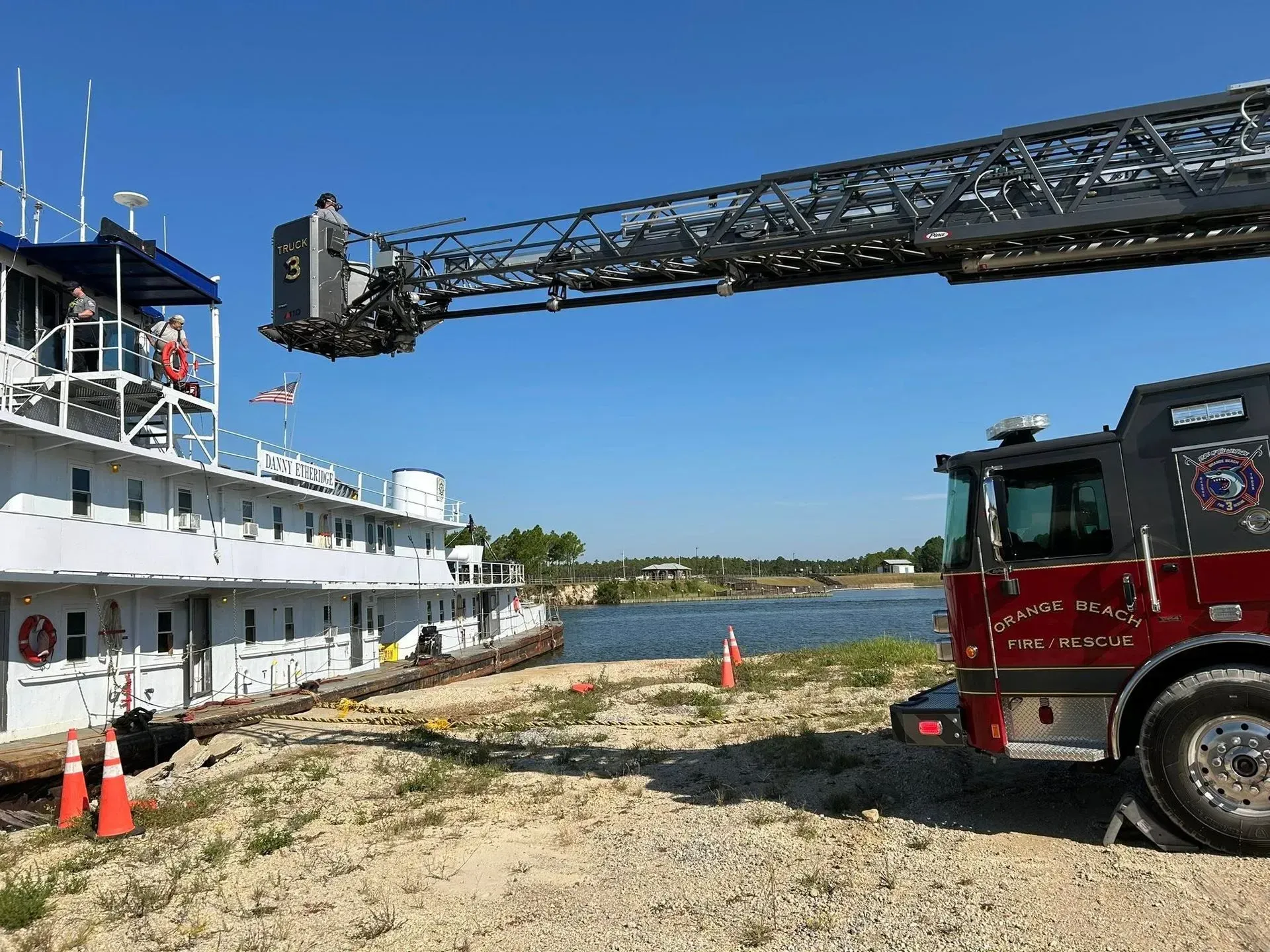How Much Will The Solar Eclipse Affect Gulf Shores
News Staff • March 29, 2024
April 8th is the date of the Solar Eclipse across the United States

We have heard the saying " Location is everything" and that will be true on April 8th, during the total eclipse of the sun across the United States. While cities in the 115 mile-wide path will experience several minutes of darkness and the ability to view the sun's corona, outlying areas may only experience a dimming affect, thou the time will last longer.
According to NASA, the residents of Gulf Shores will start of notice the dimming begin at 12:34 PM. The maximum darkness though will not occur until 1:54PM and the blocked area of the sun should be similar to a crescent moon shape. Essentially a 77.3% maximum coverage.
Another solar eclipse with a path of darkness totality will not occur again across the continental United States until 2045. Plan the middle of your day to observe the darkness but don't look directly at the sun. To safely view this solar eclipse you must use solar filters at all times. At all times, precautions should be taken. Observers will need to wear solar eclipse glasses, and cameras, telescopes and binoculars must have solar filters placed in front of their lenses.
VIEW GULF SHORES COVERAGE ESTIMATE BY NASA:
Once you click the map below, place the zip code (36542) in the search area and a coverage timeline will appear

Each time Total Solar Eclipses occur there are theorist that predict the world is ending. The United States has seen 15 total eclipses since 1867 and the earth kept spinning.
OTHER NASA ECLIPSE FATCS:
- The longest duration for a total solar eclipse is about 7.5 minutes.
- A total solar eclipse is not noticeable until the Sun is more than 90 percent covered by the Moon. At 99 percent coverage, daytime lighting resembles local twilight.
- Eclipse shadows travel at 1,100 miles per hour at the equator and up to 5,000 miles per hour near the poles.
- The width of the Moon's shadow is at most 170 miles wide.
- The maximum number of solar eclipses (partial, annular, or total) is 5 per year.
- There are at least 2 solar eclipses per year somewhere on the Earth.
- A total eclipse can only happen during a new moon.
- Nearly identical eclipses (total, annual, or partial) occur after 18 years and 11 days, or every 6,585.32 days (Saros Cycle).
- From the Earth's surface, the Sun's corona ("crown") can ONLY be seen during a total eclipse.
- Partial solar eclipses can be seen 2,000 to 3,000 miles from the track of totality.
- Total solar eclipses happen because the Sun is near one of the nodes of the lunar orbit, and the Moon is near perigee at this node at the same time.
- Annular solar eclipses happen because the Sun is near one of the nodes of the lunar orbit, and the Moon is near apogee at this node at the same time.
- Shadow bands are often seen on the ground as totality approaches.
- Light filtering through leaves on trees casts crescent shadows as totality approaches.
- Local animals and birds often prepare for sleep or behave confusedly during totality.
- Local temperatures can drop as much as 20 degrees during a total solar eclipse.
Recent Posts


























